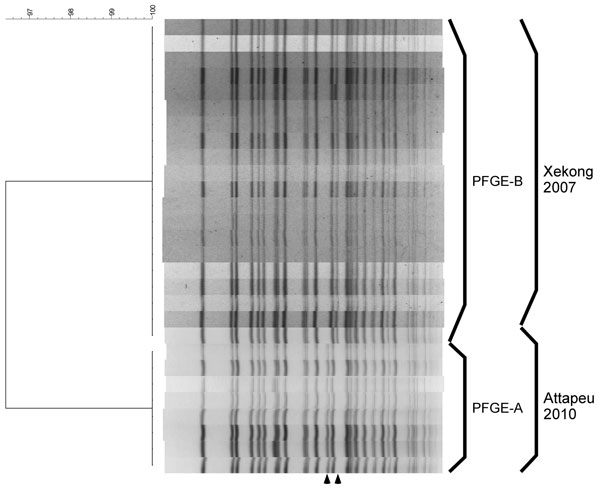Volume 17, Number 11—November 2011
Dispatch
Molecular Subtyping in Cholera Outbreak, Laos, 2010
Figure

Figure. NotI-digested pulsed-field gel electrophoresis (PFGE) profiles of Vibrio cholerae isolates, Laos, 2010. The names of the profiles and the sources of the isolates are shown on the right. A dendrogram was created with BioNumerics software (Applied Maths, Kortrijk, Belgium) by using the Dice coefficient, unweighted pair-group method with arithmetic means, and a band-position tolerance of 1.2%. Arrowheads at bottom indicate location of bands differing in PFGE-A and PFGE-B.
1These authors contributed equally to this article.
Page created: October 24, 2011
Page updated: October 24, 2011
Page reviewed: October 24, 2011
The conclusions, findings, and opinions expressed by authors contributing to this journal do not necessarily reflect the official position of the U.S. Department of Health and Human Services, the Public Health Service, the Centers for Disease Control and Prevention, or the authors' affiliated institutions. Use of trade names is for identification only and does not imply endorsement by any of the groups named above.